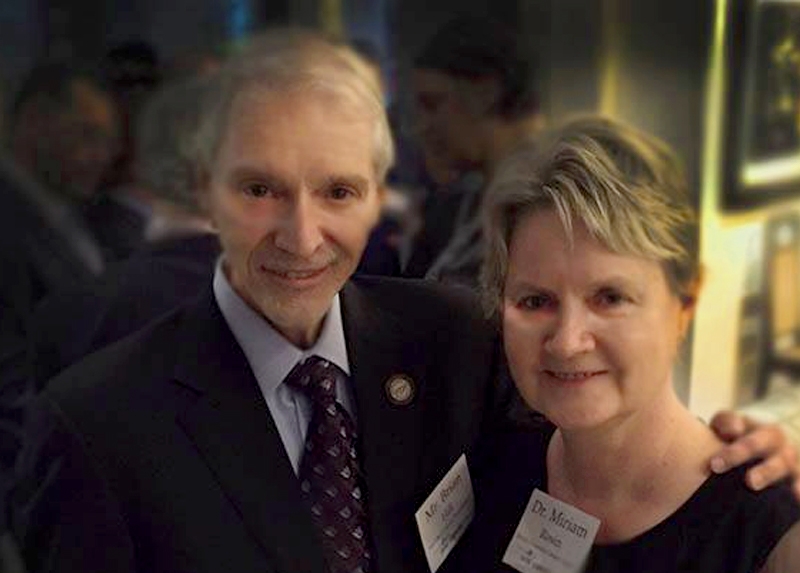At the Global Oral Cancer Forum faculty dinner at the beautiful home of Stan Bergman, the CEO of Henry Schein, who was the funding and initiative behind making this international meeting come to pass. More than a decade ago, I came across a technology that was being tested in cervical cancers to find dysplasia early at my treatment alma mater, MDACC, tissue auto fluorescence. In 2002 I met Dr. Miriam Rosen who is a brilliant researcher, Senior Scientist, and Director of the Oral Cancer Prevention Program, British Columbia Cancer Agency. I am pleased to still have her friendship and support, and catching up at this meeting was a treat. Along with other researchers at MD Anderson Cancer Center in Texas, work was begun in earnest, as it was increasingly clear that while non specific to oral cancers, TAF technology didn’t miss things. If cells were damaged in some significant manner (which were sometimes dysplasias or pre cancers), these lights could excite and cause the fluorophores in those cells to emit their own light at a longer wavelength. This allowed clinicians to see them and identify suspect tissue areas, which may have been hard to visualize with the naked eye. OCF and its donors were a part of the funding that went to MDACC to advance the cervical clinical model which was closest to publication of findings, and for several years we closely worked with Dr. Rosen, as her team translated the idea into an oral application and did proof of principal studies. As most of you already know, the first intra oral light for the elucidation of suspect tissue, the VELscope, soon entered the oral market, which now has many variations of the idea in it as well, all helping the early discovery paradigm. OCF was there at the beginning of the idea before any device existed, and we have been partners to those who were the inception of the idea since before oral was considered an opportunity. I mention all this because many people are unaware that as an organization we constantly seek new opportunities, often existing outside the world of oral environments. If we can advance those with merit into a marketable product, test, device, that serves the oral cancer community, we are moving the ball down the field. Meeting Dr. Rosen early in the process allowed me to rapidly get up to speed on the opportunities and work to see that oral cancers were on the radar for the applications considered. She continues to break ground in her field, and we are very proud of our association with her as a trusted science advisor and friend to OCF.





